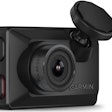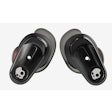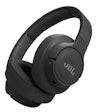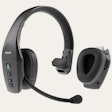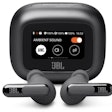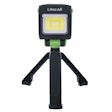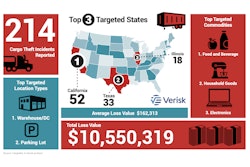By Hope Zvara, CEO of Mother Trucker Yoga
With fast food on every corner, at every stop, and often your only option for food, it can feel like an unhealthy mountain is in front of you that you will need to conquer.
There is no question, we all need to eat, but for truck drivers, convenience often plays a role in what food choices to grab when the dinner bell rings. I’ve been in the health and fitness arena for nearly 20 years, and when it comes to fast food, other people are telling you not to eat the stuff, but I’m telling you to be smart about it.
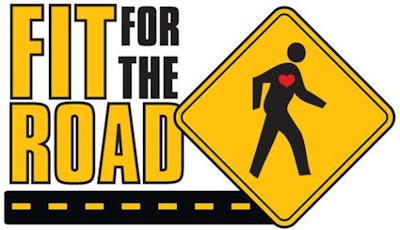
Here are five ways to turn something not great into something much better for you:
- Google it. Yes, Google the fast-food joint you are going to eat at BEFORE you go to eat. Fast food chains with 20 or more locations doing business under the same name that sells restaurant-style food are required to provide customers with calorie and nutrition information. Why before? Well, when you walk into a restaurant, you will more than likely be hungry, and that means you will be picking and choosing your menu options based on hunger, not on health, which means what you leave with might be more than a burger and fries, but the pounds to go with it.
A study posted in Science Daily shared that Dr. Benjamin Vincent from the University’s Psychology department found that: “hunger significantly altered people’s decision-making, making them impatient and more likely to settle for a small reward that arrives sooner a larger one promised at a later date.” The study above means that out the window, go your intentions to eat healthier, and stay on track. Once you walk in the door and smell the food and see the food photos shot in perfection, your brain goes nuts.
Eat smart, and that means doing a little prep work beforehand. With COVID, you can now order your food for curbside pick up, which means you don’t even have to walk in and smell those smells. And with apps now making it easier to have food brought to you (even as a truck driver), you can order before you get hungry and make those good choices. My suggestion, make a list; if you know that there are certain fast-food chains at your regular stops, make a list of the menu options you feel are better options and write them down. That way, when it’s time to stop, you don’t make a decision you will later regret.
- Aim for 500 calories. It’s easy to grab that brown paper bag and jumbo size drink and in just 10 minutes have ingested upwards of 800 calories per meal. A published in MBJ noted that the average adult consumes 847 calories every time they eat fast food, but what I found was interesting is that those adults all thought they were eating less-175 calories less. What if you are someone who eats fast food three times a day. Well, that’s an oversight of 525 calories, an entire meal!
What does a 500 calorie meal look like? At a burger joint, that could be a small burger and fries. Hungry for chicken? How about a four-piece chicken nugget and a side salad or grilled chicken sandwich and side salad. Are you feeling Mexican? Ditch the tortilla and go for a chicken burrito bowl with black beans instead. Or how about a single chicken and beef taco to go? You can find all of these options at various fast-food chains, and when in a pinch, they can do the trick and are a better option than the Double Big Mac with XL fries. Be mindful of unhealthy possibilities in disguise, salads loaded with cheese, croutons, and other toppings can tip the calorie meter well past 500, as well as the new rage on veggie burgers. Not only can these options account for way more calories, but they can also take your sodium through the roof.
- Make your menu. In today’s world, it’s all about customization. And until you ask, no one will offer. Most fast-food restaurants are more than willing to accommodate special diet menus and special requests; you have to ask. No salad on the menu; ask if they will make you one? Still a no? Ask for a container of lettuce, tomato, onions, and any other vegetable they have in the back. Want extra tomatoes on that single burger, ask. Are you gluten-free or want to reduce your carb intake? Request no bun and two burger patties instead, break them up over your side salad or box of DIY salad and top with dijon mustard and black pepper. Walla! Some fast-food chains even sell their meats and veggies to truck drivers fresh and frozen for you to prepare on your own. How cool is that! As someone who has been navigating the wonderful world of dining out with special menu requests for more than 15 years, I want to encourage you that restaurants are incredibly accommodating now more than ever if you ask with a smile!
- Mix n’ Match- Bring your items. Some drivers do not have space or the ability to travel with a fridge in their truck, but the good news is there are many food items and condiments that you can travel with that do not need refrigeration. If you like the convenience of fast food but know it’s not the healthiest choice, why not mix and match some of their food with some of yours. Items like nuts, seeds, seasonings, and dried fruits and veggies not only travel well are super yummy when added to a salad or as a replacement for your fries.
That swap can create a better balance of healthy fats, proteins, and an overall boost in nutrition, for those of you who don’t regularly travel with food and prefer to buy as you eat. I suggest you head into the truckstop first and grab a container of carrots and hummus, or a bag of nuts (lightly or unsalted), hard-boiled eggs, an apple or orange, and you have yourself a well-rounded meal once you order that single burger or DIY salad.
- Understand Portion Sizes. Do not fall victim to the “value” menu advertising angles. Your waistline and heart health are not worth a few pennies saved. As the fast-food industry has grown over the years, so has the size of their food. Although the appeal is there, “buy more for less.” Do you need a 20 piece chicken nugget? Do you need five roast beef sandwiches? Now I know the logic would be “I’ll eat them later,” but let’s be honest, how many people save them for their next meal? It’s a vicious cycle that needs to stop, and the best way to stop it is by becoming more aware of how much you should be eating.
- Fist/Computer Mouse = 1 Cup (veggies, fruits, rice)
- Cupped Hand = ½ Cup or 1 Ounce (nuts: almonds, cashews, cheese)
- 2 Cupped Hands = 1 ounce (popcorn, pretzels, chips)
- Palm = 3 ounces (lean meat, dairy, roughly 1 serving protein)
- Fingertip/Thumb Tip = 1 Teaspoon (fats, butter, mayo, sugar)
- Thumb = 2 Tablespoons (peanut butter, hard cheese)
If I were to say you should never eat at a fast-food restaurant again, I would be a hypocrite. I do not believe in black or white, but rather many shades of gray. How can you paint your fast food pitstop more of a gray tone? How can you improve your menu choices a little bit at a time? Next time you stop for a bite, remember this: is it a good option? Is it better than what I could have chosen? Is it the best option?
We may not always (be able to) choose the best option, but I believe there is still an opportunity to do better and find one good choice to put a checkmark in the healthy eating category. Over time, those small little changes add up, and that, my friend, is how you create a healthier, happier you.
(This article originally appeared in the Overdrive Truckers News Gear Guide from the RoadPro Family of Brands.)

